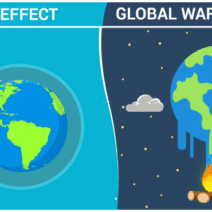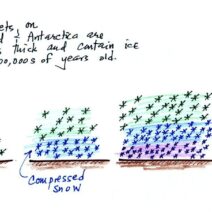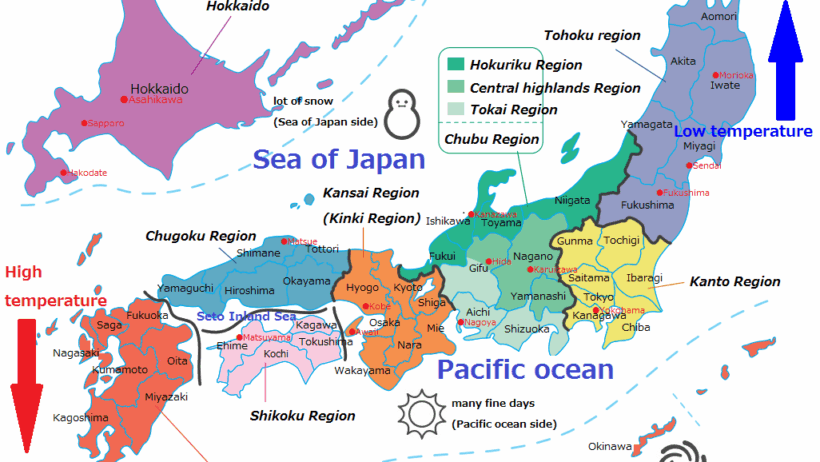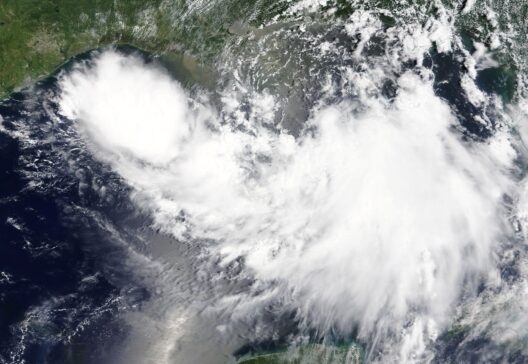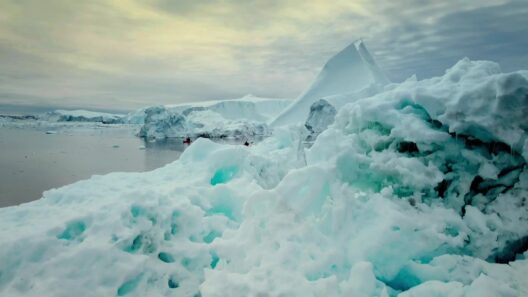Understanding Japan’s climate zones provides profound insights into the diverse ecosystems and lifestyles across the archipelago’s islands. With its unique geographical layout, Japan’s climate is characterized by a striking contrast between seasons. As one traverses the land, from the northern reaches of Hokkaido to the subtropical climates of Okinawa, the metamorphosis of weather patterns beckons a contemplative question: How do these climatic variations shape not only everyday life, but also national identity?
Japan is primarily characterized by four well-defined seasons: spring, summer, autumn, and winter. Each season possesses its own distinct attributes, influenced by geographical nuances, topographical variations, and ocean currents. The intricate interplay of these factors creates a tapestry of regional climates, each with unique flora, fauna, and cultural practices that resonate with the seasonal rhythms.
Spring, heralded by the blooming of cherry blossoms, represents renewal and hope. Spanning March to May, this season captivates the hearts of both locals and tourists alike. The emergence of vibrant hues and fragrant blossoms reflects the mastery of nature. However, as delightful as it seems, spring brings forth a challenge: the rise of allergens like pollen, which poses health concerns for many individuals. Beyond the beauty, one must question if the allure of hanami—the tradition of flower viewing—distracts from understanding ecological changes impacting local biodiversity.
As spring transitions into summer, Japan experiences a significant shift. The season typically lasts from June through August, characterized by high temperatures and humidity. Sea breezes sweeping from the Pacific Ocean dampen the oppressive heat in coastal areas, while inland regions grapple with sweltering conditions. The rainy season, known as “tsuyu,” is also a hallmark of summer. The paradox arises—while rain nourishes crops and sustains water supplies, it also leads to mudslides and flooding in vulnerable areas. This raises a pressing consideration: Could climate change alter rainfall patterns in the future, exacerbating the frequency and intensity of such disasters?
Autumn heralds a striking transformation as foliage morphs into a mosaic of warm, golden hues. Lasting from September to November, this season is a period of harvest, signifying abundance and preparation for the colder months ahead. Yet, beneath this picturesque scenery lies a more somber reality, as Japan grapples with typhoons—powerful storms that often batter the islands during this time. The picturesque hilltops of fall can conceal the devastation wrought by these natural phenomena, leading to displacement and loss. How do communities recover, and what strategies could be put in place to better prepare for such natural disasters?
Winter casts a different mood upon the land, stretching from December to February. Hokkaido and other northern regions are blanketed in snow, creating spectacular landscapes but also presenting challenges to infrastructure and daily life. The pervasive chill leads to a cultural love for winter sports, onsen (hot springs), and festive celebrations. However, managing the excessive snow and its impact on residential safety and transportation presents an ongoing struggle. This raises an intriguing question: In adapting to climate extremes, are modern innovations compromising traditional values and practices cherished within Japanese culture?
The uniqueness of Japan’s climate zones is compounded by geographical features such as mountain ranges, which create microclimates and influence local weather. The Japanese Alps, forming a barrier to warm moist air from the Sea of Japan, result in heavy snowfalls on the western side while the eastern slopes enjoy relatively milder conditions. Moreover, the presence of the Kuroshio Current impacts the climate, especially in southern regions. This intricate climatic web makes Japan a fascinating case study in the resilience of both nature and society.
To underscore this point, consider the urban centers that dot the landscape. Cities like Tokyo, with its bustling activity, exhibit a unique blend of artificial climate manipulation through extensive air conditioning and heating. In contrast, rural areas maintain a close relationship with nature, promoting sustainable practices that harmonize with seasonal changes. Is there a disconnect between urban and rural lifestyles, and how does this disparity amplify the climate crisis faced today?
This exploration of Japan’s climate zones fosters a more profound appreciation for the complexities of environmental stewardship. As individuals navigate the balance between economic advancement and ecological preservation, the urgency of sustainable practices cannot be overstated. The interplay between Japan’s unique climate and human activity presents a clarion call for innovative solutions to address the challenges posed by climate change.
In conclusion, Japan’s seasonal variations are not merely an aesthetic experience; they are intricately intertwined with cultural identity and environmental responsibility. Each season brings its own joys and adversities that shape the fabric of society. Thus, the ultimate challenge remains: Can Japan cultivate a sustainable future that honors its rich traditions while innovating for the well-being of both people and the planet? As activists, policymakers, and citizens ponder this dilemma, they embark on a collective journey to safeguard their beloved islands for generations to come.
